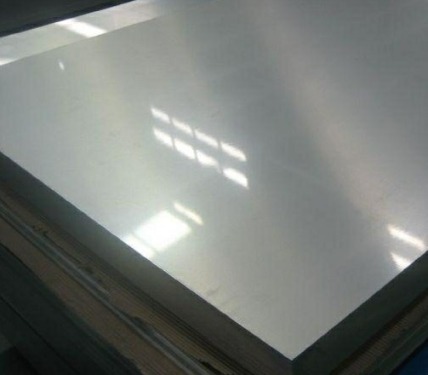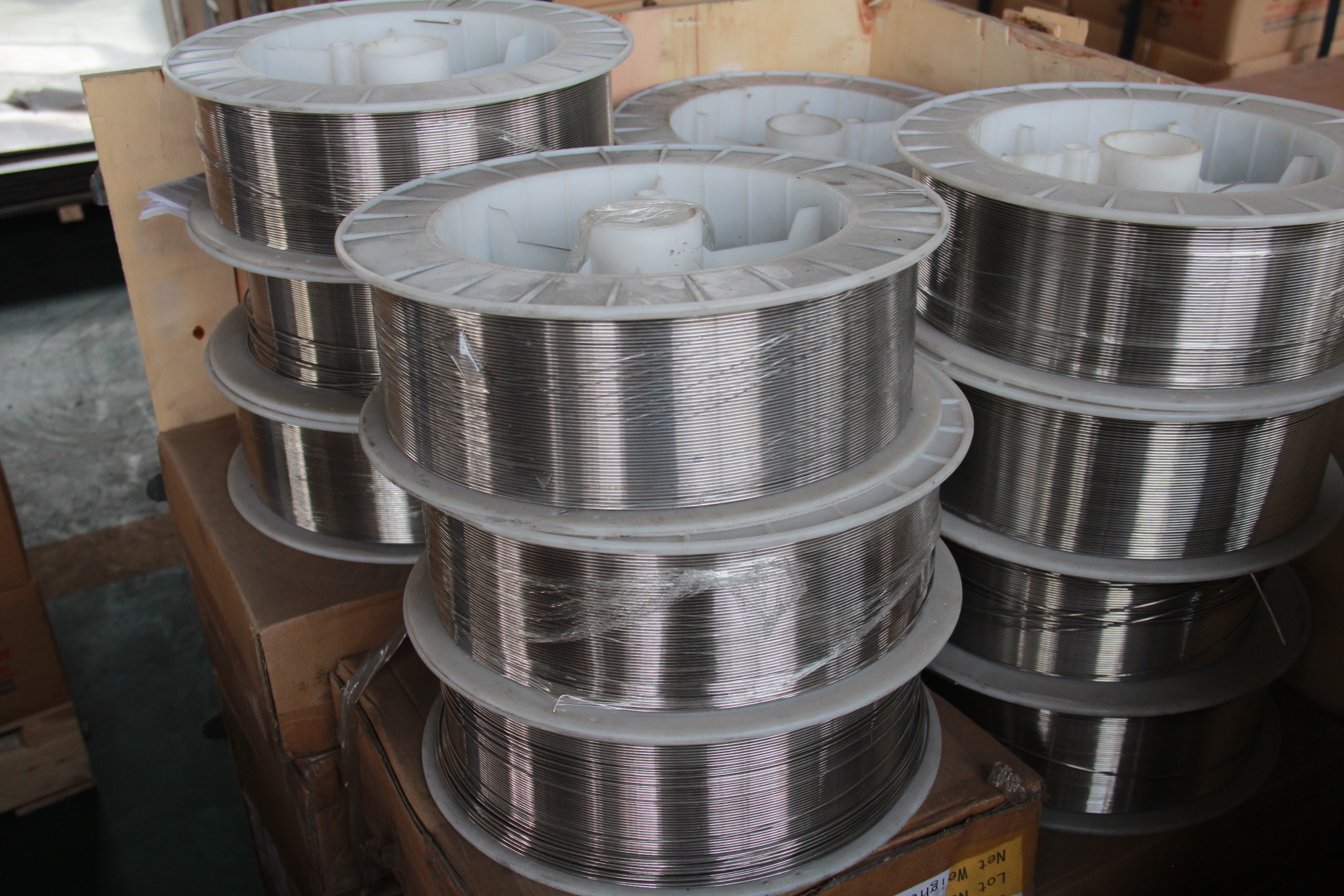 Quenching is a common process in the heat treatment of die steels. Here are five common types and measures:
Quenching is a common process in the heat treatment of die steels. Here are five common types and measures: One, longitudinal crack
Cracks are axial, thin and long. When the mold is completely hardened, ie, quenched without a heart, the core part is transformed into quenched martensite with the largest specific volume and a tangential tensile stress is generated. The higher the carbon content of the mold steel is, the greater the tangential tensile stress is, and the tensile stress is greater. Above the strength limit of the steel causes longitudinal crack formation. The following factors exacerbate the generation of longitudinal cracks: (1) The steel contains more harmful impurities such as S, P, Bi, Pb, Sn, As and other low melting points, and the steel ingot is severely segregated along the rolling direction when rolling. It is easy to generate stress concentration to form longitudinal quenching cracks, or longitudinal cracks formed by rapid cooling after rolling of raw materials are left unfinished and remain in the product, causing the final quenching cracks to expand and form longitudinal cracks; (2) The die size is within the quench-crack sensitive range of steel (The carbon steel tool steel quenching crack dangerous size is 8-15mm, the medium and low alloy steel dangerous size is 25-40mm) or the selected quenching cooling medium greatly exceeds the critical quenching cooling rate of the steel and is easy to form longitudinal cracks.
Preventive measures: (1) Strictly inspect raw materials for storage, and do not put production on excessively hazardous impurities; (2) Use vacuum smelting as much as possible, external refining or electroslag remelting die steel; (3) Improve heat treatment process and adopt vacuum heating , protection atmosphere heating and full de-oxygenation bath heating and graded quenching, isothermal quenching; (4) change the centerless quenching to quench the heart that is not completely quenched, get high strength and toughness of the lower bainite structure and other measures to significantly reduce the pull Stress can effectively avoid longitudinal cracking and quench distortion of the mold.
Second, the transverse crack
The crack feature is perpendicular to the axial direction. Unhardened dies have large tensile stress peaks at the transitions between hardened and unhardened regions. Large rapid tensile stress peaks occur when large molds are rapidly cooled. The resulting axial stress is greater than the tangential stress, resulting in lateral forces. crack. Forging module S, P. Lateral segregation of Bi, Pb, Sn, As and other low-melting-point harmful impurities or lateral microcracks exist in the module, and they expand to form transverse cracks after quenching.
Preventive measures: (1) The module should be reasonably forged. The ratio of the length of the raw material to the diameter, that is, the ratio of the forging to the forging ratio is preferably between 2-3. Forging is carried out using a double cross-shaped transformation forging, and after forging, the steel is used for forging. The carbides and impurities are fine and small, uniformly distributed in the steel matrix, the forged fibrous tissue is distributed non-directionally around the cavity, and the lateral mechanical properties of the module are greatly increased, and the stress source is reduced and eliminated; (2) Select the ideal cooling rate and cooling medium : Fast cooling above the Ms point of the steel is greater than the critical quenching cooling rate of the steel. The stress generated by the undercooled austenite in the steel is thermal stress, the surface layer is compressive and the inner layer is tensile, cancel each other, effectively preventing thermal stress. The formation of cracks slows down between Ms and Mf of the steel, significantly reducing the structural stress when quenched martensite is formed. When the sum of the thermal stress and the corresponding stress in the steel is positive (tensile stress), it is easily quenched and cracked, and when it is negative, it is not easy to quench crack. Make full use of thermal stress, reduce the phase change stress, and control the total sum of stress is negative, which can effectively avoid transverse quench cracking. The CL-1 organic quenching medium is an ideal quenching agent. At the same time, it can reduce and avoid quenching mold distortion, and can also control the reasonable distribution of the hardened layer. Adjusting the concentration of CL-1 quenching agent in different concentrations, different cooling rates can be obtained to obtain the required hardened layer distribution to meet the needs of different mold steel.
Third, the arc crack
Occurs in the mold corners, notches, holes, die wiring flash edge shape mutations. This is because the stress generated at the corners during quenching is 10 times the average stress of the smooth surface. In addition, (1) the higher the content of carbon (C) and alloying elements in the steel, the lower the Ms point of the steel, and the lowering of the Ms point by 2°C, the quenching cracking tendency increases by 1.2 times, the Ms point decreases by 8°C, and the quenching crack occurs. The tendency is increased by 8 times; (2) different organization changes and the same organizational changes in steel are different in time, due to different tissue specific tolerance, resulting in a huge tissue stress, resulting in the formation of arc cracks at the junction of the organization; (3) did not return in time after quenching Insufficient fire or tempering, residual austenite in the steel is not fully transformed, remains in service, promotes stress redistribution, or occurs in the martensitic transformation of the retained austenite during the service of the mold. When the comprehensive stress is greater than the strength limit of the steel, arc cracks are formed; (4) Has a second type of temper brittle steel, quenched and tempered at low temperature, resulting in precipitation of P, s and other harmful impurities compounds along the grain boundary, greatly reducing The grain boundary bonding strength and toughness increase the brittleness and form an arc crack under the action of external force when in service.
Preventive measures: (1) Improve design, try to make shape symmetry, reduce shape changes, increase process holes and stiffeners, or use combined assembly; (2) Fillet generation right angles and sharp edges, through-holes blind holes, improve Processing accuracy and surface finish, reducing the source of stress concentration, can not avoid the normal hardness requirements such as right angle, sharp corners, blind holes, etc., can be used to wrap or stuff iron wire, asbestos rope, refractory mud, etc., causing artificial cooling barriers, Allow it to cool and quench slowly to avoid stress concentration and prevent formation of arc cracks during quenching; (3) Quenched steel should be tempered in time to eliminate some quenching internal stress and prevent quenching stress from expanding; (4) Longer time tempering and improved mold resistance Fracture toughness value; (5) Full tempering to obtain stable microstructure and properties; Multiple tempering to fully transform and eliminate new stress in retained austenite; (7) Reasonable tempering to improve fatigue resistance and comprehensive mechanical mechanical properties of steel parts; For the second type of temper brittle die steel after rapid tempering (water-cooled or oil-cooled) at high temperature, the temper brittleness of the second type can be eliminated to prevent and avoid arc crack formation during quenching.
Fourth, peel crack
When the mold is in service, the hardened layer is stripped from the steel substrate under stress. Due to the difference in specific volume between the surface and the core of the die, the surface layer forms an axial and tangential quenching stress during quenching, generates a tensile stress in the radial direction, and mutates to the inside. Peeling cracks occur at a narrow range of sharp changes in stress. During the cooling process of the chemical heat treatment of the surface layer, the quenching of the martensite of the inner and outer layers caused by the chemical modification of the surface layer and the phase transformation of the steel substrate are not carried out simultaneously, resulting in a large phase change stress, resulting in the chemical treatment of the penetration layer from the matrix structure. Peel off. Such as flame surface hardened layer, high frequency surface hardened layer, carburized layer, carbonitriding layer, nitriding layer, boronized layer, infiltration metal layer. After chemical quenching, quenching should not be followed by rapid tempering. In particular, rapid heating at low temperature and tempering below 300°C will promote the formation of tensile stress in the surface layer, while the core and transition layer of the steel matrix form compressive stress. When the tensile stress exceeds the compressive stress, The chemically penetrated layer was pulled apart and peeled.
Preventive measures: (1) The concentration and hardness of the chemically penetrated layer of the die steel should be reduced from the surface to the inside, and the bonding force between the permeation layer and the substrate should be enhanced. After the permeation, diffusion treatment can make the chemical penetration layer and the matrix uniform; (2) Moulds Before the chemical treatment of steel, diffusion annealing, spheroidizing annealing, and tempering treatment are carried out to fully refine the original structure, which can effectively prevent and avoid peeling cracks and ensure product quality.
Five, mesh crack
Crack depth is shallow, generally about 0.01-1.5mm deep, radial, alias crack. The main reasons are: (1) the raw material has a deep decarburized layer, which is not removed by cold cutting, or the finished mold is heated in an oxidizing atmosphere furnace to cause oxidative decarburization; (2) the mold decarburized surface metal structure and steel matrix martensite Carbon content is different, different specific volume, steel decarburized surface quenching produces large tensile stress, therefore, the surface metal is often cracked along the grain boundary into a network; (3) raw material is coarse grain steel, the original coarse structure, There is massive ferrite, conventional quenching can not be eliminated, remains in the quenched structure, or temperature control is inaccurate, the instrument fails, overheating of the tissue, even overheating, grain coarsening, loss of grain boundary binding force, mold quench cooling When the carbides of the steel are precipitated along the austenite grain boundaries, the strength of the grain boundaries is greatly reduced, the toughness is poor, and the brittleness is large. Under the action of the tensile stress, the carbides break apart along the grain boundaries.
Preventive measures: (1) strict raw material chemical composition. Metallographic examination and inspection, unqualified raw materials and coarse-grained steels are not suitable for mold materials; (2) Select fine-grained steel, vacuum furnace steel, review the depth of decarburized layer of raw materials before production, cold cutting allowance must be greater than off Depth of carbon layer; (3) Formulate advanced and reasonable heat treatment process, choose microcomputer temperature control instrument, control precision to ± 1.5 °C, regular on-site calibration instrument; (4) Vacuum furnace, protective atmosphere furnace and full deoxidation for final treatment of mold products Salt bath furnace heating mold products and other measures to effectively prevent and avoid the formation of mesh cracks.
Alloy steel refers to steel with high strength and good chemical stability at high temperature. It includes two types of anti oxidation steel (or high temperature resistant steel) and hot steel. Anti oxidation steel generally requires good chemical stability, but the capability is limited. High temperature strength and the corresponding oxidation resistance of heat and strong steel are required. Heat-Resistance Steel is often used in the manufacture of boiler, steam turbine, power machinery, industrial furnace and aviation, petrochemical and other industrial sectors in the work of the high temperature parts. In addition to the requirements of high temperature strength and high temperature oxidation corrosion, sufficient toughness, good shaping and welding are also required according to the different use, as well as a certain organizational stability. In addition, some new low chromium nickel oxidation are also developed .
Heat-Resistance Steel
Heat-Resistance Steel ,Heat-Resistant Material Handling Steel,Heat-Resistant Steel Tube,Heat-Resistant Black Round Steel Pipe
Jiangsu nickel alloy Co.,Ltd , http://www.xhalloy.com